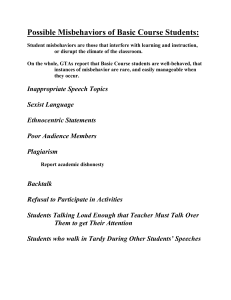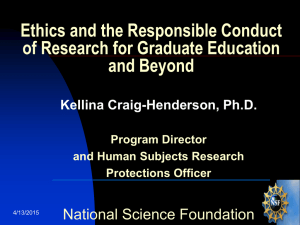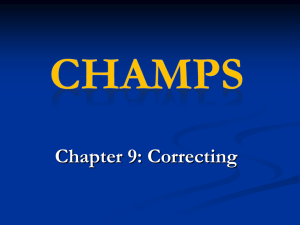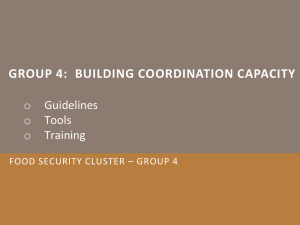Positive Classroom Discipline by Fredric Jones
advertisement
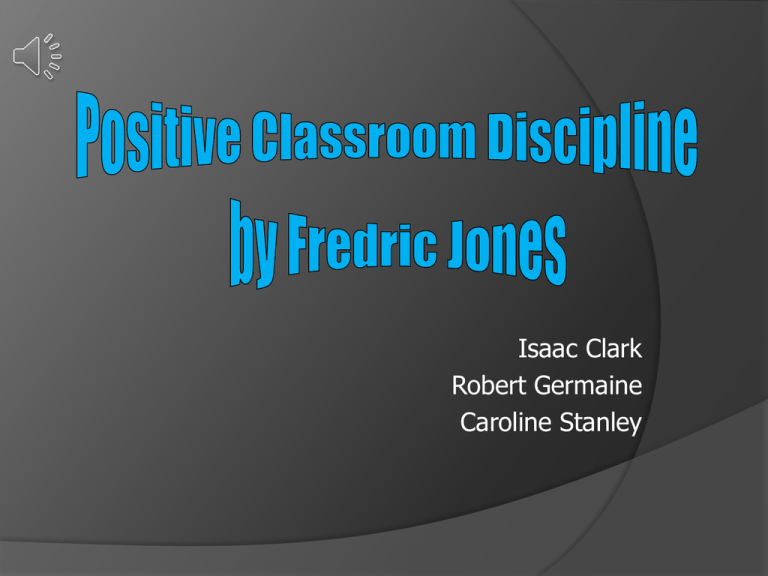
Isaac Clark Robert Germaine Caroline Stanley Classroom management must be built from the ground up so that most problems do not occur.” -Dr. Fred Jones Introduction Prevent misbehavior through routines and classroom environment Active teaching that promotes student participation and attention Utilize incentive system to encourage appropriate behavior, work output, and responsibility Provide effective guidance during independent work Save Instructional Time with Management Techniques Room Arrangement- Teacher should be able to move freely and easily through the room to assist and manage students, thus limiting behavior problems and interruptions through proximity. Classroom Rules- Should be general and specific; students should know what they are supposed to do and how they are supposed to do it. Class Chores- Each student should have a chore to do in the classroom, this will give them a sense of ownership and responsibility Opening Routines- Each class should begin with some type of bell work that “engages and focuses students on the day’s lesson”. Students should be able to start this activity on their own without assistance from the teacher Skill Cluster 1: Classroom Structure to Discourage Misbehaviors Skill Cluster 2: Limit Setting through Body Language Skill Cluster 3: Using Say, See, Do Teaching Skill Cluster 4: Responsibility Training through Incentive Systems Skill Cluster 5: Providing Efficient Help to Individual Students Skill Cluster 1: Classroom Structure to Discourage Misbehaviors Room Arrangement: The room should be arranged in a manner that makes it easy for the teacher to circulate the room. This will minimize misbehaviors. Class Rules: Class rules should be specific, few in number, and define the teachers expectations for academic and behavioral success. The rules should be posted and reviewed frequently. Skill Cluster 1: Classroom Structure to Discourage Misbehaviors (Continued) Classroom Chores: Delegate as many classroom chores as you can. This helps the students to feel invested in the class. Opening Routines: Lessons should begin with the ringing of the school bell. This can be done with a “morning drill or journal that requires very little to no direct instruction. This will limit downtime and misbehaviors. Skill Cluster 2: Limit Setting through Body Language Body Language: You can “set limits” with your body language. Proper Breathing: This is a technique that can be used to help stay calm. Eye contact: This is a non-verbal way to cease and prevent misbehaviors. Physical Proximity: By walking the room you can help to keep students on track and refocus those that are off track. Facial Expressions: These non-verbal cues can have a positive or negative impact on how students respond to a teacher. Skill Cluster 3: Using Say, See, Do Teaching Visual Instruction Plans: Keeps students on task and reduces misbehaviors. Say, See, Do Teaching: A “doing” approach that has students immediately work with the information that have just been given. Skill Cluster 4: Responsibility Training through Incentive Systems Grandma’s Rule: Students do better work and have fewer misbehaviors if given an incentive after they finish a task. that students enjoy work as the best incentives. Student Responsibility: Students can learn responsibility through the use of incentives. Genuine Incentives: Activities Preferred Activity Time: Time set aside in planning for learning based games, centers, and workshops that can work as an incentive. Skill Cluster 4: Responsibility Training through Incentive Systems (Continued) Educational Value: Student work should be meaningful. Omission Training: A plan for individual students that continue to display misbehaviors. Positive behaviors will allow the class to earn incentives. Group Concern: Incentives need to motivate every student to be effective. Ease of Implementation: Incentive systems should be easy to use for the teacher and the students. Backup Systems: A last resort system put in place to deal with students who continue to display misbehaviors. Small backup response Medium backup response Large backup response Skill Cluster 5: Providing Efficient Help to Individual Students Helpless Hand raising: Students will raise their hands to get attention, not always when help is needed. Efficient Help: Optimize student independence by: Room organization Visual Instructions Minimize the amount of help given to individual students Key Points of Jones’ 5 Clusters Work the room Body Language Room Arrangement Say, See, Do Teaching Praise, Prompt, Leave Rules, Routines, and Expectations Stay Calm Visual Instructions Body Language: Limit Behavior Problems and Help Maintain Focus Proper Breathing- The key to maintaining self-control in difficult situations is through proper breathing. Eye Contact- “Few physical acts are more effective than eye contact in conveying the impression of being in control” Physical Proximity- Simply positioning ones self near a student exhibiting a less desirable behavior, reminds the student to maintain focus on the . Body Carriage- Proper posture is another way of letting students task at hand know you mean business. Facial Expressions- Like other types of body language convey thoughts and feelings to students: seriousness, appreciation, annoyance, likewise, “winks and smiles demonstrate a sense of humor, the trait that students most enjoy in teachers.” See, Say, Do Teaching and VIPs See, Say, Do Teaching- As opposed to a lecturing style of teaching, where students sit for long periods of time listening to the teacher lecture and then “doing” something at the end of the lesson, with See, Say, Do Teaching, students, as well as the teacher, actively participate throughout the entire learning process. The students will “see” and then “do” something throughout the teaching of the lesson. Thus, reducing time spent sitting “passively” and increasing time spent actively engaged in the lesson. VIPs- Visual Instruction Plans: are “series of picture prompts that represents the process of the activity or thinking and clearly guides students through the process of the task and performance.” Which will cut down on time spent answering the “I forgot what to do” questions, or the “What next?” questions. Class Incentives Incentive- Defined by Jones “is something outside of the individual that prompts the individual to act.” Example of Class Incentive- Preferred Activity Time (or PAT) is described as time earned by the class to use for a preferred activity. Time is earned by the entire class, but can be deducted due to the actions of one student as to build responsibility to the entire class. Preferred activities should have “educational value” and not just be “free time”. Interact Frequently: “Be Positive, Be Brief, Be Gone” Individual Assistance- Jones recommends each episode of individual help last no longer than 20 seconds, with optimal time being 10 seconds. This makes the most use of instructional time, and allows the teacher more time to work with students who need help. It also cuts down on time students spend waiting on the teacher for help. According to Jones, help is to be given using the following model: Be Positive- Skim over students work, looking for things the student has done correctly. Mention, positively, something the student has done correctly. Be Brief- Prompt the student by directing them to the VIP chart, or by giving them a direct task. Be Gone- Walk away promptly. What it does for teachers Increases sense of control Reduces stress Fewer office referrals Increases instruction time Pros of Jones’s Model Strategies are teachable Promotes preventing behavior problems Supports proper behavior Model can be implemented in steps Cons of Jones’s Model Teachers may need specific training to master techniques PAT may be difficult to implement into early childhood grades Jimmy is a fifth grade student in Mrs. Martyn’s class. Although he is a quiet pupil and never is a disruption, Jimmy lacks drive to complete any assignments. He prefers to sit in his seat and daydream. Mrs. Martyn cannot get Jimmy to do any work. How would you use Jones’s model with Jimmy? Positive Classroom Discipline Be POSITIVE and BRIEF Create an individual incentive program. Jimmy can earn PAT time for himself through appropriate behavior. Make frequent eye contact and move Jimmy’s desk closer to you Check on his progress several times during seat work Conclusion Jones Positive Discipline Model promotes improving teacher effectiveness to prevent misbehavior in the classroom. The model emphasizes student motivation and positive incentives. References Jones, F. 1987a. Positive classroom discipline. New York: McGraw-Hill. Jones, F. 1987b. Positive classroom instruction. New York: McGraw-Hill. Jones, F. 1979. The gentle art of classroom discipline. National Elementary Principal, 58, 26-32. Charles, C. M. (2005). Building classroom discipline (8th ed.). Needham Heights, MA: Allyn and Bacon.




